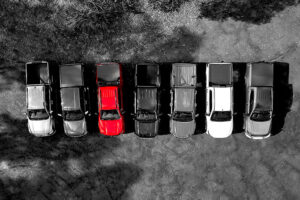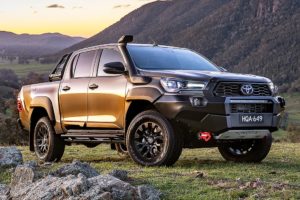The federal government’s big-spending budget has delivered good news for Australian dealers of cars, trucks, construction and farm machinery, with the extension of the instant asset write-off scheme in place for FY22 and FY23.
Now known as the ‘temporary full expensing’ measure, the write-off was introduced early in 2020 as the COVID-19 pandemic took hold in Australia to allow businesses with a turnover of up to $5 billion to write off the full value of an eligible asset such as a work vehicle.
The extension will apply to eligible assets, whether new or second-hand, that are acquired between October 6, 2020, and June 30, 2023 – a year longer than before.
The scheme is widely credited in stimulating strong growth in vehicle sales, particularly utes. So far, 2021 has seen utes such as the Ford Ranger and Toyota HiLux flying out of showrooms at record pace as consumer and business confidence is restored.
The government will also reduce the tax rate for small and medium businesses, from 30 per cent to 25 per cent from July 1, 2021.
The Australian Automotive Dealer Association (AADA) said the measures should stimulate ongoing vehicle sales, which have surged in recent months.
“The extension of the full expensing measure … will come as welcome news for many in our industry. This will give businesses including Australia’s more than 3000 dealerships the confidence to invest,” said AAA chief executive James Voortman.
As part of the Budget, the federal government has kept the so-called ‘low and middle income tax offset’ for individuals in place for another year.
“The significant tax relief provided to many middle- and lower-income Australians is welcome news and will no doubt instil consumers with the confidence to spend,” Voortman added.
Consumer spending on cars, recreational items to continue
Despite the federal government’s promised fast-tracking of COVID-19 vaccines to Australians, consumers are predicted to continue to spend and travel mostly within the confines of Australia for the rest of the year and well into 2022, boding well for dealers of lifestyle-orientated cars, caravans, boats and bikes.
Indeed, the demand for new cars is highlighted in pulsing new car sales, in particular to private buyers – with the new April sales record capping off a run of six successive months of sales growth.
In further good news, the federal government’s apprenticeship wage subsidy scheme will be extended and is expected to help create 170,000 new positions – some of which are destined to result in more employment opportunities at dealers around the country.
Recently, strong vehicle usage, and spending on accessories and servicing has resulted in an uptick in employment opportunities right across the automotive industry. Leading Australian job site SEEK currently lists over 10,000 job openings in the Australian automotive industry, ranging from front-end retail and management positions to Aftersales positions such as Service Advisors and Parts Interpreters.
The news of further tax relief and apprenticeship wage subsidy has also been met positively by the Australian construction industry. April’s Australian Performance of Construction Index (Australian PCI) has indicated the construction sector is continuing to bounce back strongly post pandemic, albeit at a slightly slower pace following recent record highs.
Road and marine funding
The government is also continuing to invest heavily in Australian roads across all states and territories.
The Australian Automobile Association (AAA) has welcomed the latest measures, which bring road infrastructure spending to $7.77 billion this current financial year – up from the $7.38b commitment made last October – and add a further $8.2b in the year ahead.
“Now that this standard of delivery has been set, motorists will expect the government to deliver in full on its road funding commitments in the year ahead,” said AAA managing director Michael Bradley.
However, the AAA chief said he was concerned by the lack of clarity regarding to road safety funding and urged that “no government should view road safety through the prism of economic stimulus”.
“No Australian wants their government to say its interest in road safety is only pegged to economic returns,” Bradley said. “Saving each of those lives is equally important and should have the laser focus of government.”
The budget will also tip another $10 million into local government projects next financial year to help them improve boating and fishing infrastructure, including boat ramps.
Electric Vehicles
There was no specific funding for electric vehicles in the budget, despite the headline pre-budget announcement of $1.2bn being invested into “low emissions technology innovation and commercialisation”.
Most of this relates to programs outside the automotive industry, but there is $275.5 million allocated to helping develop four new hydrogen export hubs, which the government says increases its commitment to building an Australian hydrogen industry to more than $850m.
This might help development of the fledgling hydrogen fuel-cell electric vehicle industry in Australia, which has moved forward this year with the launch of the Hyundai NEXO and Toyota Mirai FCEVs.
But the Climate Council says the government has failed to take advantage of the opportunity “to fund a clean recovery from COVID-19”.
It cites data from the Global Recovery Observatory that “shows that Australia has spent $US130 billion on COVID recovery efforts but less than two per cent of that money has been spent on solutions to reduce emissions”.
In contrast to the federal government’s position, the Victorian government last week announced a subsidy to boost adoption of Zero Emissions Vehicles, including EVs, as it seeks to grow sales to 50% of new cars by 2030.
And other major auto markets, such as Germany and France, allocated 47 per cent and 50 per cent of their respective recovery spending to clean solutions, according to the council.
“Among major economies and our strategic allies, Australia is right at the bottom of the pack when it comes to spending on solutions that reduce emissions, create jobs and strengthen our economy,” said Climate Council spokesperson and economist Nicki Hutley.
Further reading
VFACTS April: Utes, SUVs drive new car sales to record high
$3000 subsidy to spark up Victorian EV sales
Australian car buyers want a good deal … Now
[/et_pb_text][/et_pb_column][/et_pb_row][/et_pb_section]




